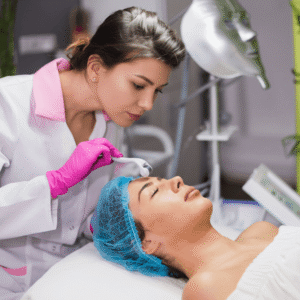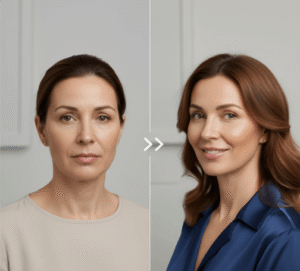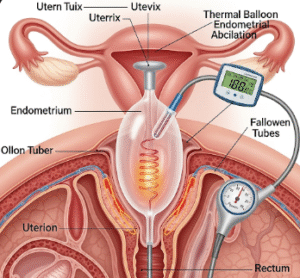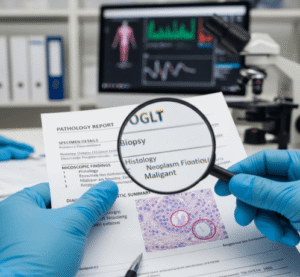Overview
Homonymous hemianopia, also called homonymous hemianopsia, is a visual field defect in which a person loses half of the visual field in both eyes on the same side. This condition usually results from damage to the brain’s visual pathways, rather than a problem with the eyes themselves.
It often affects daily activities such as reading, driving, and navigating through spaces, posing a significant challenge to independence. In South Korea, neurology and ophthalmology centers provide advanced diagnostic tools, rehabilitation, and vision therapy to help patients manage this condition effectively.
Key Facts
🟢 ➤ Homonymous hemianopia affects the same side of the visual field in both eyes (right or left).
🟢 ➤ Most commonly caused by stroke, traumatic brain injury, or brain tumors.
🟢 ➤ Symptoms may include bumping into objects, difficulty reading, or neglecting one side of space.
🟢 ➤ Early diagnosis and rehabilitation improve safety, independence, and quality of life.
🟢 ➤ Treatment includes vision therapy, compensatory strategies, and addressing underlying causes.
🟢 **➤ Korean medical centers provide multidisciplinary care involving neurologists, ophthalmologists, and occupational therapists.
What is Homonymous Hemianopia?
Homonymous hemianopia is a loss of one-half of the visual field in each eye, affecting the same side (right or left) in both eyes.
Key points:
➤ Results from damage to the brain’s post-chiasmal visual pathways, including the optic tract, lateral geniculate nucleus, optic radiations, or occipital cortex.
➤ The condition is not caused by eye disease, so the eyes themselves usually remain healthy.
➤ Can be complete (entire half of the visual field lost) or incomplete/partial (some areas of the visual field are preserved).
➤ Often accompanied by other neurological symptoms, depending on the location and severity of the brain lesion.
Symptoms Related to Homonymous Hemianopia
Symptoms vary depending on the extent of visual field loss:
🟢 ➤ Loss of vision on one side of each eye (right or left visual field).
🟢 ➤ Bumping into objects or people on the affected side.
🟢 ➤ Difficulty reading or writing, as text may fall outside the visual field.
🟢 ➤ Challenges in navigating stairs, crowded areas, or driving.
🟢 ➤ Neglecting one side of space, leading to safety hazards.
🟢 ➤ Visual hallucinations or perceptual distortions may occur in rare cases.
Causes / Possible Causes
Homonymous hemianopia occurs due to damage to the brain’s visual pathways, most commonly from:
Stroke
➤ The most frequent cause in adults, particularly ischemic or hemorrhagic stroke affecting the occipital lobe or optic radiations.
Traumatic Brain Injury (TBI)
➤ Head injuries may damage visual pathways, resulting in partial or complete hemianopia.
Brain Tumors
➤ Tumors in the occipital lobe or parietal/temporal lobes can compress visual pathways.
Other Neurological Causes
➤ Brain infections, multiple sclerosis, or aneurysms affecting the visual cortex.
Congenital or Rare Causes
➤ Very rarely, hemianopia can occur in children due to developmental brain abnormalities.
When Should I See a Doctor?
Immediate consultation is needed if you notice:
🟢 ➤ Sudden loss of vision in half of the visual field.
🟢 ➤ Difficulty reading, walking, or noticing objects on one side.
🟢 ➤ Associated symptoms such as headache, weakness, or numbness.
🟢 ➤ History of stroke, head injury, or neurological disorders.
Early evaluation ensures accurate diagnosis, rapid management of underlying causes, and initiation of rehabilitation strategies.
Care and Treatment
Treatment for homonymous hemianopia focuses on rehabilitation, compensatory strategies, and managing the underlying cause:
Vision Therapy and Rehabilitation
➤ Compensatory scanning training – patients learn to turn their head and eyes toward the affected side.
➤ Visual field expansion strategies – using prisms or specialized lenses to increase visual awareness.
➤ Occupational therapy – trains daily activities such as reading, cooking, and mobility.
Medical Management
➤ Treat underlying causes such as stroke, brain tumors, or infections.
➤ Medications may be prescribed for stroke prevention or neurological recovery.
Assistive Devices
➤ Prism glasses or electronic visual aids can help patients compensate for missing visual fields.
➤ Magnifiers or adaptive reading devices assist in daily activities and learning.
Advanced Care in Korea
➤ Neurology and ophthalmology centers provide advanced imaging (MRI, CT) for diagnosis, tailored rehabilitation programs, and multidisciplinary follow-up care.
➤ Korean occupational therapy centers specialize in visual scanning, mobility training, and safety strategies.
Highlights (Clean Green Arrow Version)
🟢 ➤ Homonymous hemianopia is a loss of half the visual field in both eyes on the same side.
🟢 ➤ Common causes: stroke, traumatic brain injury, brain tumors, and other neurological disorders.
🟢 ➤ Symptoms: bumping into objects, difficulty reading, neglecting one side, and challenges in mobility.
🟢 ➤ Early diagnosis and rehabilitation improve safety, independence, and quality of life.
🟢 ➤ Treatment includes vision therapy, compensatory strategies, assistive devices, and management of underlying causes.
🟢 ➤ South Korea offers advanced neurology, ophthalmology, and occupational therapy services for comprehensive care.













